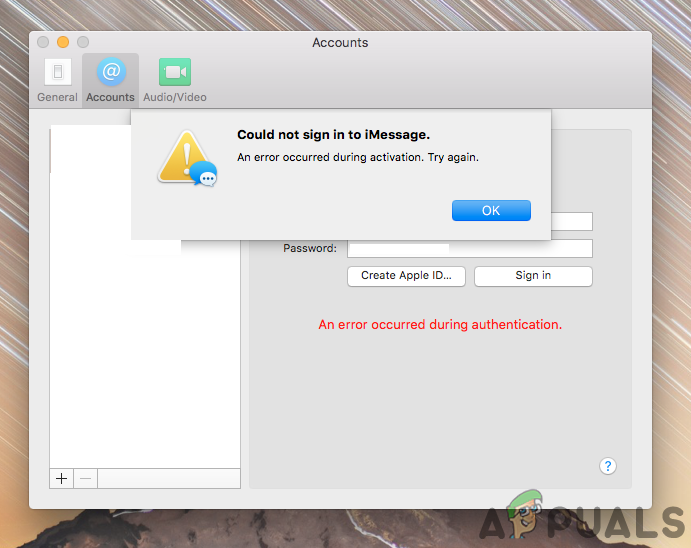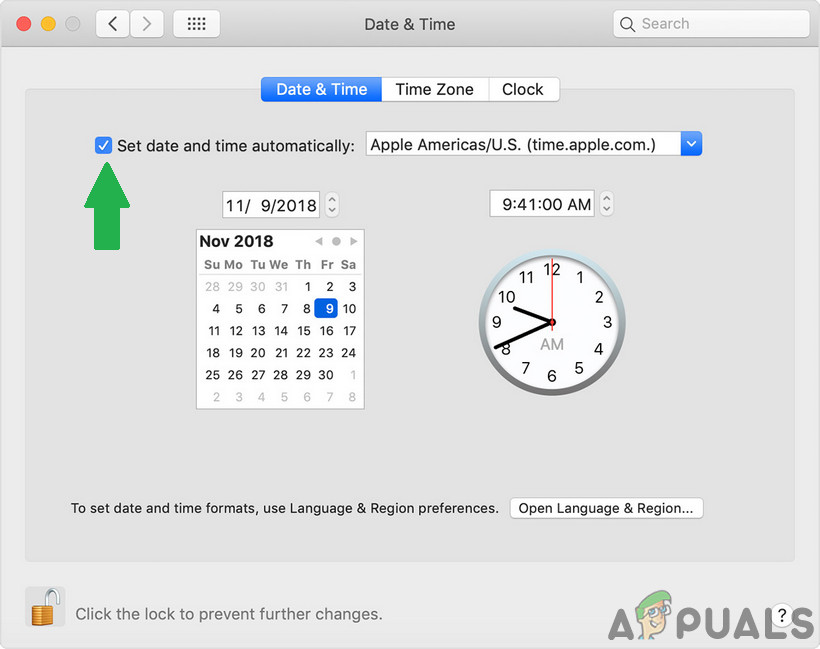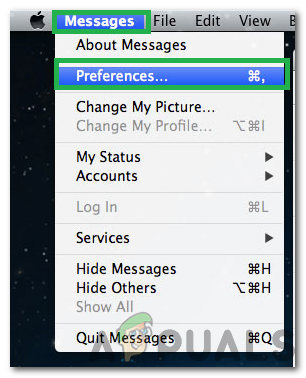Resolve the Could not sign in to iMessage error on MacOS
This issue is usually triggered when there is an internet outage at the user’s end or service disruption on Apple’s end. When this error message appears, the user is unable to use iMessages entirely even if he was logged in earlier. In some cases, issues with NVRAM of the computer or interference from third-party applications might cause the error message.

What Causes the “Can’t Sign into iMessage” Error on Mac?
We found the underlying causes to be:
- Internet Connection: It is very important that both the phone and the Mac are connected to a stable internet connection. Establishing a connection with the servers and then retrieving personal info such as messages isn’t an easy task and requires a trusted internet connection with stable speeds. If the internet is facing frequent disconnection issues or slow speeds, the error might be triggered.
- Service Outage: In some cases, the error might actually be at Apples’ end due to the servers being in maintenance. Occasionally, the servers have to be checked for bugs and maintained for any damages, this process requires partial or complete shutdown which can prevent the establishment of a connection.
- Date and Time: It is possible that the Date and Time settings might not have been configured properly due to which the error is being triggered. The Data and Time settings are very important in establishing the internet connection because the server certificates are updated every day on the web and if the date and time aren’t correct the certificates can’t be verified and the connection is blocked.
- Glitched ID: In some cases, the Apple ID might get glitched due to which the access to incoming messages might be blocked by the computer. This glitch can easily be removed by re-initiating the Sign-in process and individually logging in to the messages app.
- Corruption of Cached Data: All Macs use an “NVRAM” to temporarily store certain launch configurations and other settings that are accessed regularly. This stored data can sometimes be corrupted and prevent the computer from being able to sign in to certain services. Also, it might prevent iMessages from launching.
Solution 1: Checking Date and Time
If the Date and Time settings have been glitched and the computer is using a false Date and Time, the error might be triggered. Therefore, in this step, we will be reinitiating the automatic check for date and time which will force the computer to correct this mistake. For that:
- Click on the “Apple Menu” and select the “System Preferences” option.

Selecting the “System Preferences” option - Click on the “Date and Time” option and check if the Time Zone, Date and Time are configured properly according to your area.
- Even if they are configured properly, uncheck the “Set Date and Time Automatically” option and then check it again.

Unchecking the “Set Date and Time Automatically” option - This will trigger a check on the computers’ end and it will fix any problems with the configuration of the date and time.
- Check to see if the issue persists.
Solution 2: Signing in to iMessages
In some cases, the Apple ID might get glitched due to which the error might be triggered, Therefore, in this step, we will be re-initiating the sign in to iMessage. For that:
- Click here and log in with your Apple ID and verify that you are able to log-in with the information.

Logging in with the Apple ID - Now, we will be using the same information to log-in to iMessages.
- Click on the “Messages” option and select the “Preferences” button.

Clicking on “Messages” and selecting “Preferences” - Click on “Accounts” and select your iMessage account.
- Click on the “Sign out” button to log off the account.
- Sign-in again and check to see if the issue persists.
Solution 3: Clearing NVRAM
It is also possible that the NVRAM might be storing data that is preventing the computer from being able to log-in to your account. Therefore, in this step, we will be clearing all the data being stored in NVRAM and it will be regenerated automatically by the computer. In order to clear the data:
- Shut down the Mac completely and wait for 5 minutes.
- Initiate the startup and immediately press and hold the following keys together.
“Option” + “Command” + “P” + “R”. - Keep these keys pressed for 20 seconds and the Mac will restart.
- If your computer plays a startup sound, release the keys after the second startup sound and if your computer doesn’t play the startup sound release the keys when the Apple Logo Appears and disappears for the second time.
- After that, log in to your account and check to see if the issue persists.





